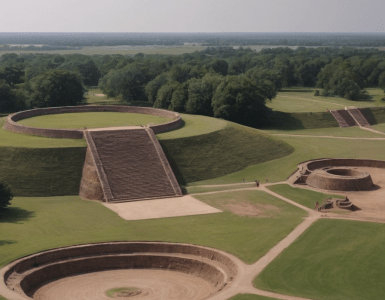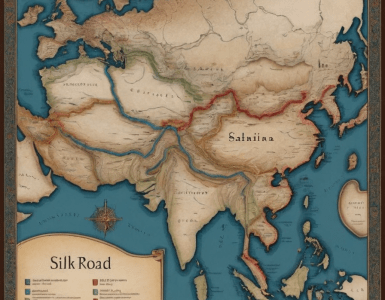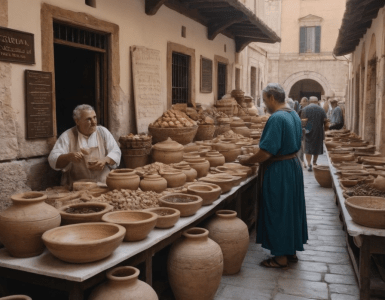Ever wondered why we do the things we do? Why certain traditions persist, seemingly out of nowhere? The answer often lies buried deep within history, in unexpected connections and surprising consequences. It’s a tangled tapestry, woven with threads of chance, ingenuity, and sometimes, just plain weirdness. Let’s unravel a few of those threads, shall we?
From Roman Fish Sauce to Modern Cuisine: A Surprisingly Tasty Legacy
Imagine a world where your Caesar salad wouldn’t be the same. Sounds crazy, right? Well, that’s because it hinges on a Roman culinary obsession: garum. This fermented fish sauce was the umami bomb of the ancient world, a ubiquitous condiment present in nearly every Roman meal. Its production was a massive industry, with entire fleets dedicated to fishing the necessary ingredients. The recipe, involving gutting and fermenting fish, sounds less than appealing today, yet its influence on culinary preferences across the then-known world is undeniable. Without garum, our modern understanding of savory flavors might be vastly different. Its legacy lives on, subtly influencing the development of soy sauce and other fermented fish pastes in various cultures.
The Potato: A Humble Tuber with a Powerful History
The potato’s journey from the Andes to global dominance is a fascinating case study in cultural exchange and unintended consequences. Initially met with suspicion in Europe – its association with poverty and disease in its early days didn’t help – the potato eventually became a staple crop. Its high yield and nutritional value helped fuel population growth in Europe and significantly impacted the course of history, indirectly playing a role in the Industrial Revolution. However, its introduction also brought along the devastating late blight, contributing to the infamous Irish Potato Famine. A single plant’s journey across continents, shaping diets, economies, and even the population distribution of entire nations – it’s a testament to the profound impact of seemingly small things.
The Unexpected Influence of Pirates on Language
Think of pirates, and you probably picture swashbuckling adventurers speaking a colourful blend of English and nautical jargon. But the impact of piracy goes far beyond storytelling. The constant exchange and interaction between pirates of diverse backgrounds led to a surprising linguistic melting pot. Creole languages, born from the interaction of these seafarers, often carry words and grammatical structures derived from several distinct languages. The unique vocabulary and phrases found in these creoles ultimately enriched the linguistic landscape. Think of it as the unexpected language legacy of a bunch of seafaring rogues.
La Ruta de la Seda: Más que seda
The Silk Road, a network of trade routes stretching across Eurasia, is often romanticized for its silk trade. Yet, the real story is far richer. It wasn’t just silk; the Silk Road facilitated the exchange of ideas, religions, art, and technologies across immense distances. Buddhism spread from India to East Asia along these routes, shaping the spiritual and cultural landscapes of entire civilizations. Mathematical and scientific innovations traveled as well, leading to cross-cultural pollination that enriched human knowledge. The Silk Road stands as a powerful example of how trade isn’t just about goods; it’s a catalyst for cultural exchange and transformation. History's Unexpected Family Tree: Culture's Surprisingly Twisted Branches
The Curious Case of the Fork: A Latecomer to the Table
The humble fork, now an indispensable part of dining, has a surprisingly late arrival to the Western table. Its adoption was gradual and initially met with resistance, with some considering it an effeminate or even blasphemous tool. The fork’s journey from a niche utensil to its current status is a reflection of evolving table manners and social norms. Its widespread adoption coincided with changes in social etiquette and the rise of refined dining practices, proving that even the simplest items can be intertwined with complex historical and cultural shifts.
The Unexpected Origins of Halloween
Halloween, with its spooky costumes and trick-or-treating, has roots in both Celtic traditions and Christian religious practices. Its origins trace back to the ancient Celtic festival of Samhain, a time marking the end of the harvest and the beginning of the dark, cold winter – a time when boundaries between the living and the dead were believed to blur. The integration of Samhain with Christian festivals like All Saints’ Day and All Souls’ Day created the unique blend of traditions we recognize today. So, next time you’re carving a pumpkin, remember the rich historical and cultural layering behind this modern holiday.
Clockwork and Cultural Shifts: The Unexpected Impact of Time
The invention of the mechanical clock and its widespread adoption weren’t just about telling time. This technological shift had a significant impact on the organization of daily life, labor practices, and governance. The precise measurement of time led to a more regimented society, influencing everything from work schedules to religious observances. Our modern, time-conscious world owes a significant debt to this seemingly minor technological advancement.
These examples only scratch the surface of the fascinating interplay between history and culture. By exploring these unexpected connections, we gain a deeper appreciation for the richness and complexity of human civilization and the surprising ways in which seemingly unrelated events can have profound and lasting impacts.

























Añadir un comentario